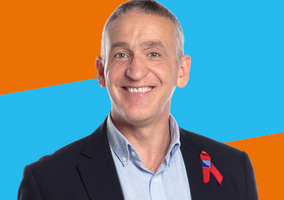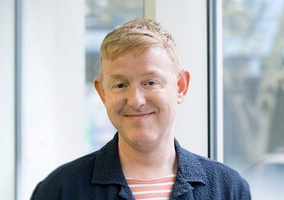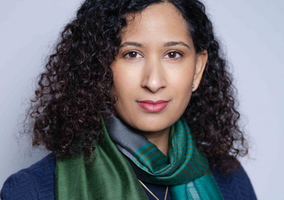When Heidi Travis began working with Sue Ryder, she had not anticipated that she would one day become chief executive. Travis has a corporate background and joined the charity in a consultancy capacity, at first thinking her stint would be somewhat short term, to “help out”.
Travis had worked at Marks & Spencer (M&S) for more than 20 years before she took on the position of director of retail at the end-of-life care charity in March 2010. Then in September 2013, she was promoted to chief executive.
In the years she led the charity’s retail operations, its profits grew from about £3.5m to £12.5m. Travis says she “kind of thought that would be [her] job done” but “by then [she] was a bit hooked”.
“I think Sue Ryder is a very, very special organisation. It had things to be fixed, it still has things to be fixed,” she says, “but it does have a really strong DNA of wanting to do the very best thing.”
Travis says she still has that M&S commercial “let's just get it done hat on” approach and that she will “never get that out” of her.
She says what she loves about the charity is that it is a “can do, will do, organisation”.
Pandemic: ‘Such a lot came off the table’
During her tenure, the charity has grappled with a number of issues, including a difficult funding climate and the coronavirus pandemic.
“In a way, [the pandemic] was easier than business as usual, because such a lot came off the table,” Travis says.
The charity focused on getting its staff and residents through the pandemic safely.
“We were just more concerned about what was going on out there in our centres and with our health teams and trying to make sure we were doing absolutely everything we could to support the people on the front line,” she reflects.
Travis suggests the focus it brought to the charity was a positive.
“One of the big wins was collaboration, alongside speed of decision making, and people getting on with what really needed to be done.”
Travis says during the pandemic the charity’s fundraising communications “got quite strong” as it did not “see any point in pulling the punches on talking about funding”.
She says charities need to have many income streams, and “our messaging and fundraising is always trying to be really authentic about what the need is and what the problem is and what we're trying to solve. And that's the way we will go on messaging. So, it is about supporting everyone and supporting more people again over the next decade.”
Recruitment: ‘This is one of the most challenging times the charity has faced’
Travis says “right now is probably one of the most challenging times” the charity has faced during her leadership due to staffing issues.
“I am not concerned in a sense about the viability of what we do [but] I am concerned about recruitment,” Travis says.
The shortage of nurses and clinical and care staff is of huge concern. This is partially as people are “living in this really challenging economic time” so are looking for additional pay.
“We've got full-time paid staff who we know are using food banks, that doesn't feel good,” says Travis. “If there's a kind of challenging time and a constant pressure, it's probably now.”
This is partially because of factors beyond the charity’s control, which Travis says she finds tough.
“We can't solve the whole problem of what's going on with energy costs, house costs, money costs, inflation,” she says.
“I think, the battle, and it is a bit of a battle now, to get people just seems relentless.”
Travis says the charity’s recruitment struggle affects everything at the organisation “because it impacts on existing teams who try to work harder, and impacts on everybody in the organisation because they're trying to get the right recruits in the right places. So, I think that's probably the biggest challenge and probably isn't going away very quickly at the moment by the looks of it.”
‘I don't think funding is necessarily the only solution’
“Funding has been a conversation for a very long time. I don't think there are many ministers, ex-prime ministers, ex-health secretaries, people in NHS England, who don't know that the financial funding of hospices should be better,” says Travis.
Travis reflects that the government funds maternity through the NHS, and looks after people in other parts of their life journey, “but there’s this weird thing where end-of-life is expected to be supported largely by charitably raised donations. So, you've got to sell things in shops, or you've got to go running and fundraising and do events to make sure people get a really good end of life plan.”
The average adults’ hospice in the UK receives 30% of its funding from government health budgets, which Travis says is challenging to manage, and “obviously caused some hospices over time to close”.
But Travis says she does not think funding “is necessarily the only solution”. Rather, she says, “getting partnership working to happen at pace is the only solution to the lack of workforce”.
She says because of the last two and a half years of the pandemic and ensuing backlog, the only way the system is going to be able to get back on track, is “to do some things differently”.
“If people don't come together, that's the NHS and charitable enterprises, it will be a really tough time. There's only so much resource and people have got to be willing to let go of stuff to do that.”
Travis notes charities do not want to damage their brand, because they need to fundraise with that, but says “I think stepping forward with other people” can be positive.
Finding those with unmet need
Travis says Sue Ryder has always been about meeting unmet need. The charity now wants to grow its bereavement support and care, using different models. She says the charity will work with partners and be out in the community more.
Part of this strategy has meant a focus on equality, diversity and inclusion (EDI). The charity has a new head of EDI as the charity “weren't making the progression we would want to make; in fact we just weren't driving it forward and going fast enough”.
“We do need to be inclusive,” Travis says, both for staff and also for patients. She says the charity needs to provide the care in the way the patient wants it – and therefore understand the different communities from which people come.
The charity has a healthcare inequalities project and have also been working on a perceptions piece.
She says “how we are perceived isn't so much as being a white middle class charity” but some communities think “we won't have what they want”.
“What we're developing is how we take responsibility for the inequalities, not just put a little signpost up that says, ‘you can come here, we're very nice’. We've got to take some responsibility for facing out to people and saying what do you want? How do you want it?” says Travis.
“What we don't want to be is only a bespoke service for a few. We have to reach out and make sure that we are serving all communities to make sure that there isn't inequality, because otherwise if we're not reaching out then we would be helping to exacerbate that inequality by standing ourselves somewhere as only for a certain group of people.”
Related Articles
Ian Green: ‘It’s been the privilege of my life to lead the Terrence Higgins Trust’
The HIV charity’s outgoing CEO discusses his own diagnosis, experience of conversion therapy and challenges he has faced in the role
Chris Sherwood: ‘We must challenge the perceptions of what a charity leader looks like’
RSPCA’s chief executive discusses his experiences in the sector and how charities can support staff from less privileged backgrounds to thrive
Farah Nazeer: ‘Charities need the courage of their convictions to speak out’
Farah Nazeer, chief executive at Women's Aid, speaks to Harriet Whitehead about how the charity is campaigning to challenge misogynistic culture and end domestic abuse












